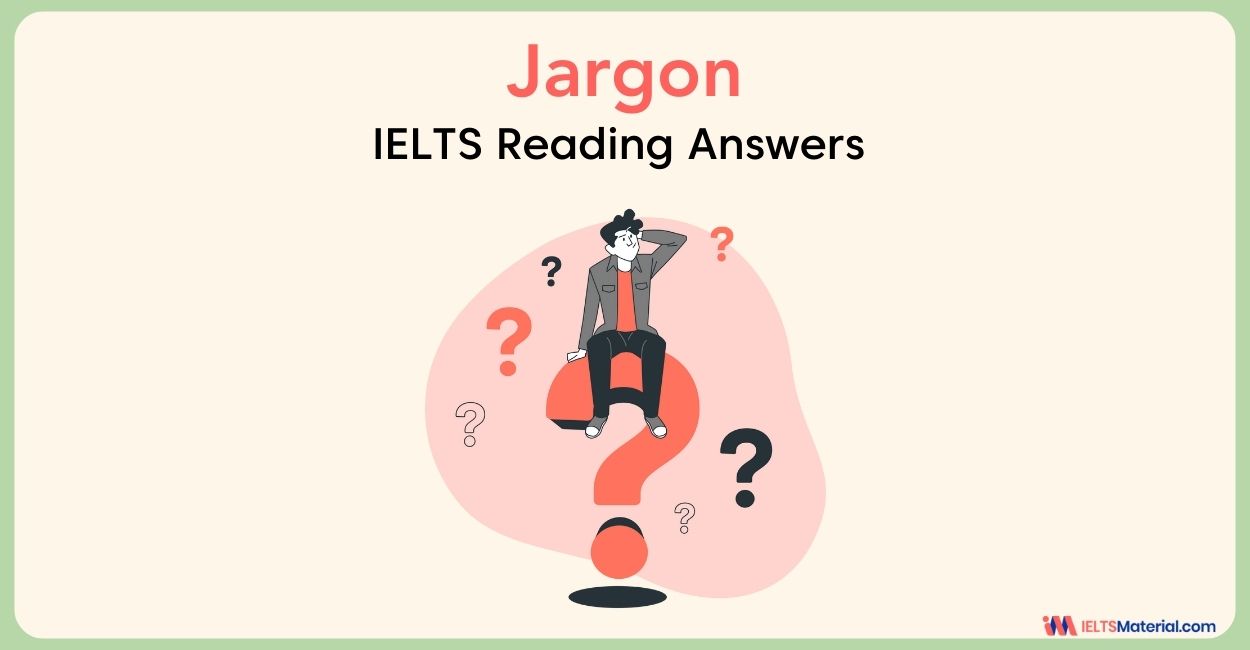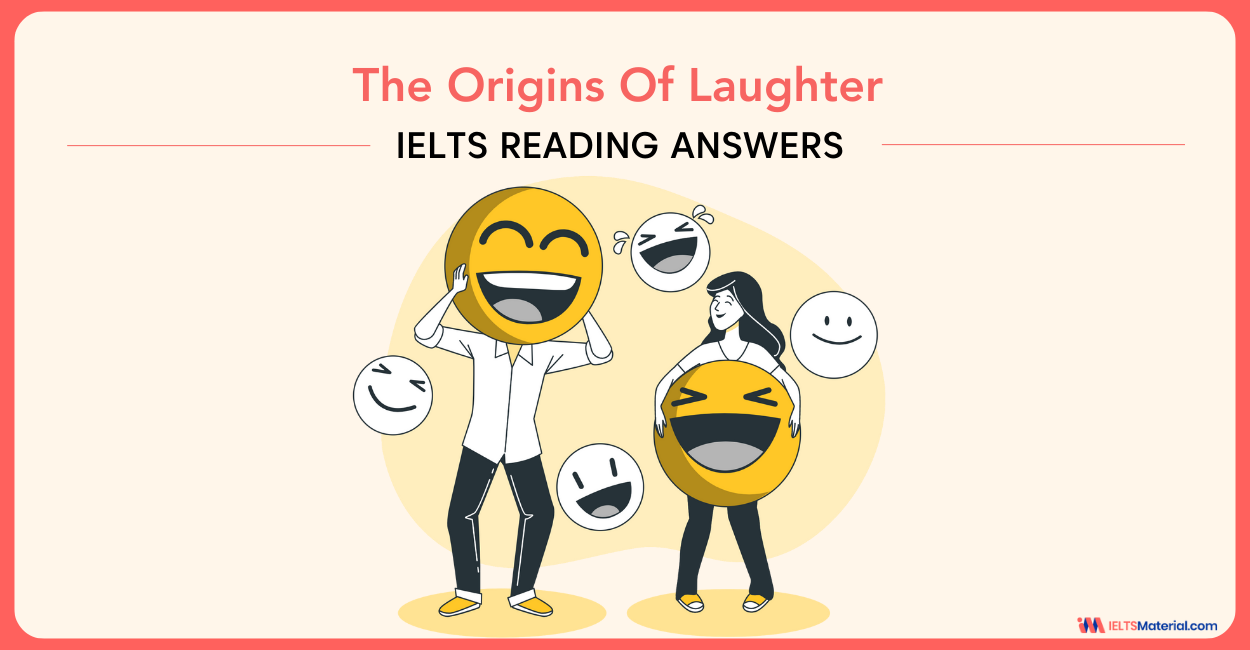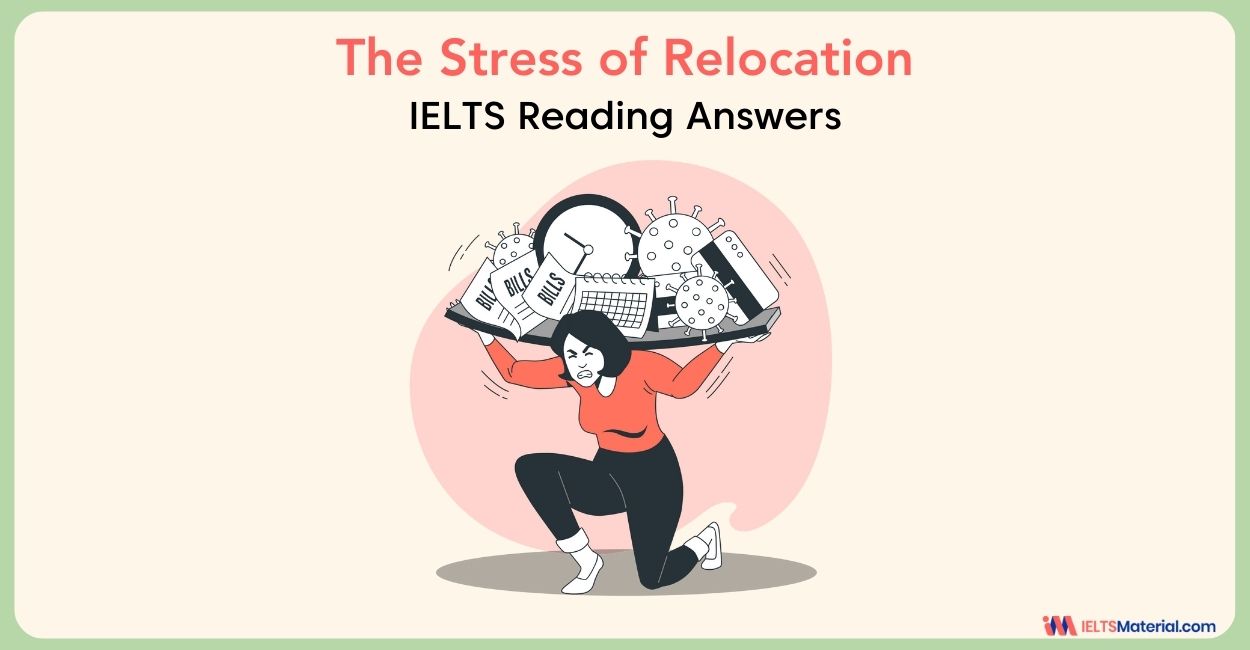The Stress of Relocation Reading Answers
Table of Contents

Limited-Time Offer : Access a FREE 10-Day IELTS Study Plan!
This article contains The Stress of Relocation reading answers.
The Stress of Relocation is a real Reading test passage that appeared in the IELTS.
With diligent practice, the Reading Module can be the top-scoring category for IELTS Aspirants. To score well, you must understand how to approach and answer the different question types in the Reading Module.
By solving and reviewing Sample Reading Questions from past IELTS papers, you can ensure that your Reading skills are up to the mark. Take the practice test The Stress of Relocation below and try more IELTS reading practice tests from IELTSMaterial.com.
Not sure how to answer IELTS Reading Multiple Choice Questions? Check out the video below for the latest tips and strategies!
For more Multiple Choice Questions practice, take a look at IELTS Reading Multiple Choice Example 1!
The Stress of Relocation
You should spend about 20 minutes on Questions 1-13, which are based on the Reading Passage below. Find the practice test with The Stress of Relocation PDF here.
Answers
The answers with explanations are given below
| Question Number | Answers | Keywords | Location of Keywords |
|---|---|---|---|
| 1. | D | Relocation Stress Syndrome, or RSS | Paragraph A, Line 2 |
| 2. | B | Medical testing for vague symptoms like headaches, skin rashes, and insomnia brought neither relief nor diagnosis | Paragraph B, Lines 5-6 |
| 3. | D | seemed uncharacteristically depressed and had experienced mood swings | Paragraph C, Lines 3-4 |
| 4. | A | patient data from medical practice and Emergency Room records | Paragraph D, Lines 6-7 |
| 5. | B | Yet nearly 3% of patients seen by GPs in Dr Molveldt’s study had moved within one month, and 9% within six. | Paragraph C, Lines 3 – 4 |
| 6. | C | records of more serious accidents from a nationwide database | Paragraph F, First 2 lines |
| 7. | B | many interviewees said they had been drinking in response to circumstances – one of which was moving house. | Paragraph F, Lines 4-6 |
| 8. | H | People who had had serious accidents, however, had not moved more frequently than those with non-specific ailments. | Paragraph F, Lines 6-8 |
| 9. | G | somewhere between being newly married | Paragraph F, Lines 12-13 |
| 10. | F | Interestingly, subjects in several of Dr Molveldt’s tests rated moving less highly than she did, | Paragraph F, Last 3 lines |
| 11. | C | couples already struggling, move house in the hope of resuscitating their relationship. | Paragraph G, Lines 4-6 |
| 12. | E | Moreover, it is the children in these cases who suffer most: not only has upheaval meant the loss of their old school and friends, but it also signals adjustment to the occupation of their new home while one absent parent resides in another. | Paragraph G, Last 5 lines |
| 13. | J | Paragraph |
[/showhideContent]
Check More IELTS Reading Answers
Also check :
Practice IELTS Reading based on question types

Start Preparing for IELTS: Get Your 10-Day Study Plan Today!
Explore other Reading Topics

Janice Thompson

Janice Thompson

Nehasri Ravishenbagam

Kasturika Samanta
Recent Articles

Kasturika Samanta

Janice Thompson

Kasturika Samanta





Post your Comments